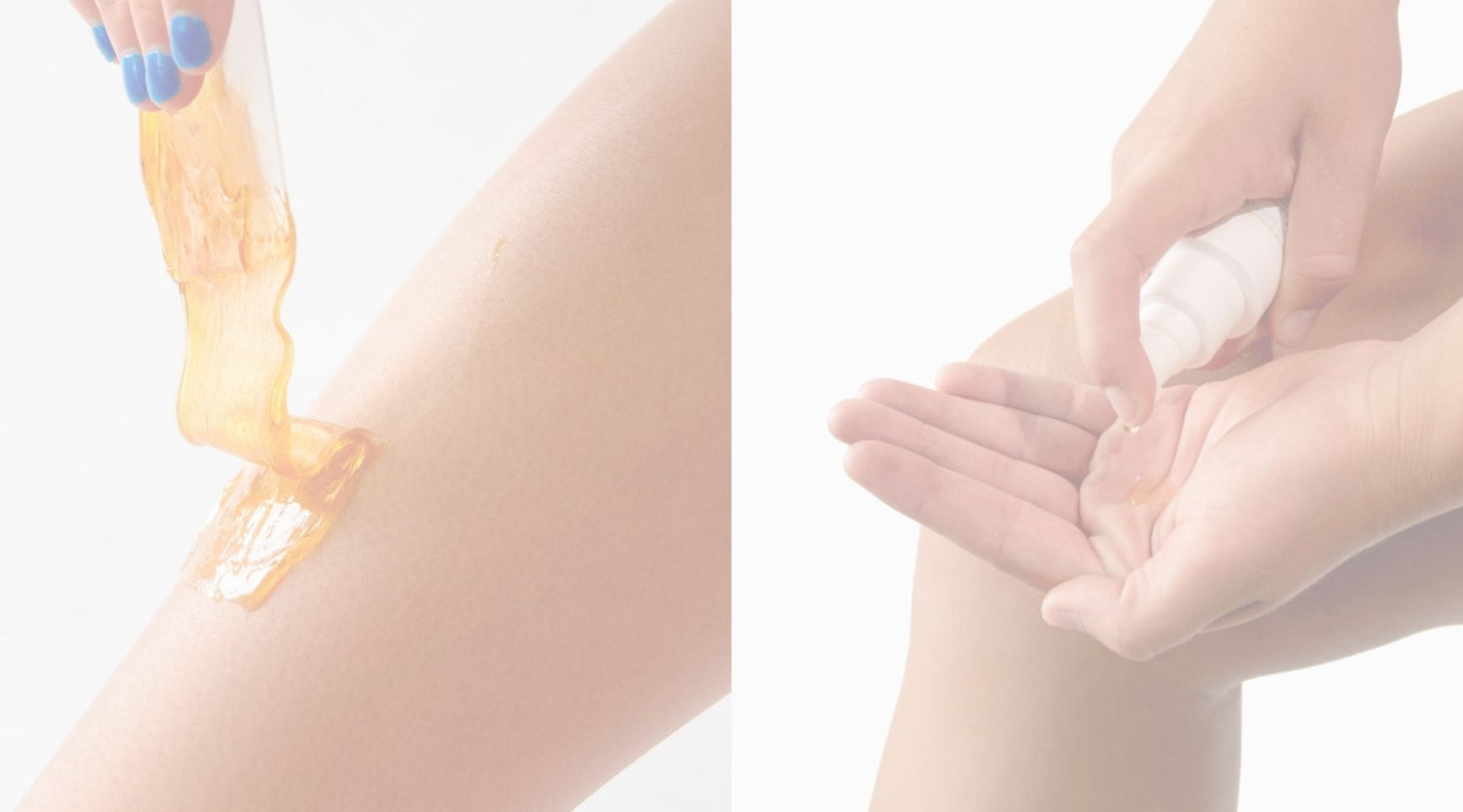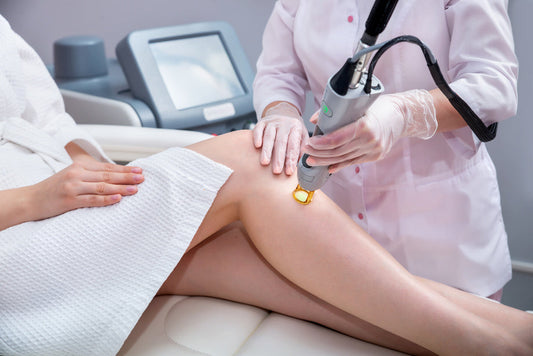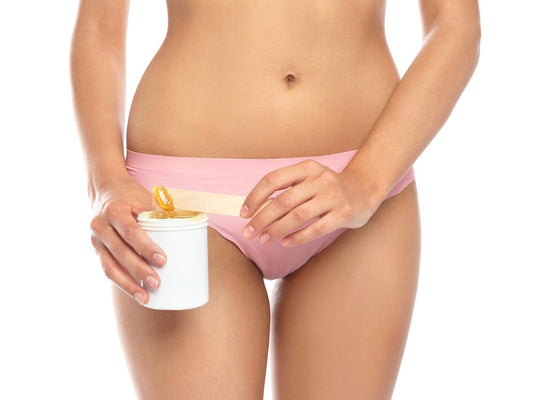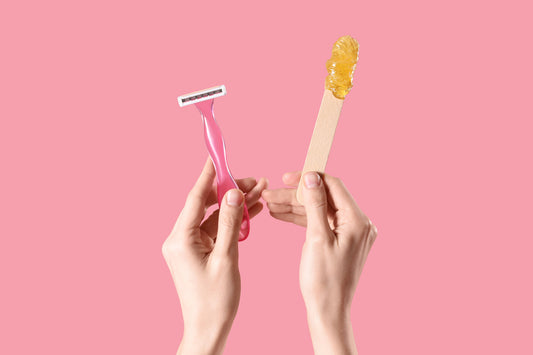Sugaring is a natural and gentle method of hair removal that uses a simple paste made from sugar, lemon, and water to effectively remove hair from the root.
This ancient technique, less painful and more skin-friendly than traditional waxing, offers a sweet alternative for those seeking smoother, hair-free skin.
With benefits ranging from minimal irritation to longer-lasting results, this article dives into everything you need to know about sugaring, from its origins to how you can incorporate it into your beauty routine.
What this article covers:- What Is Sugaring?
- How Is Sugaring Different From Waxing?
- How to Prepare for Sugaring
- Aftercare for Sugaring
- Benefits of Sugaring
- Sugaring (FAQs)
What Is Sugaring?
Sugaring is an ancient hair removal method that uses a natural paste, typically made from just three ingredients: sugar, lemon juice, and water.
This eco-friendly and skin-nurturing technique pulls hair out from the root, offering a less abrasive alternative to traditional waxing. Its simplicity and effectiveness have made it a favored choice for those seeking a more natural approach to smooth, hair-free skin.
How Does Sugaring Work?
The process begins with the sugaring paste being warmed to a comfortable temperature, just above body heat, ensuring it's pliable yet not too hot. The paste is then applied against the grain of hair growth, ensuring deep penetration to the hair follicles.

With a firm flicking motion, the paste—and the ensnared hairs are removed in the natural direction of hair growth. In our experience, this method is key to minimizing hair breakage and irritation, as it aligns with the natural anatomy of hair follicles, leading to a smoother finish and more prolonged periods between sessions.
Is Sugaring Painful?
Let's be honest, the idea of pulling hair out from the root doesn't exactly sound like a walk in the park, but sugaring is usually less painful than waxing. The magic lies in the sugar paste's natural adhesion properties; it binds to the hair without aggressively sticking to the skin.
This selective adherence means that when the paste is removed, it targets the hair more than the skin, leading to a less intense sensation and leaving behind smooth, soothed skin without the heightened sensitivity often associated with waxing.
What Body Parts Can You Use Sugaring On?
One of the beauties of sugar wax is its versatility. This method is safe and effective for virtually any part of the body, from the eyebrows and upper lip to the legs and bikini area. Its gentle nature makes it suitable even for sensitive skin, reducing the risk of irritation.
Whether you're looking to shape your brows, achieve silky smooth legs, or anything in between, sugaring can be tailored to meet your hair removal needs, making it a go-to for full-body grooming.
How Long Do Results Last?
The longevity of sugaring results can be quite impressive, with many experiencing smoothness that lasts from three to six weeks.

The key to extending these results lies in the technique's ability to remove hair from the root, which disrupts the natural growth cycle and leads to slower regrowth.
After sugaring ourselves for years, we've found that over time, and with regular sessions, you might even notice that your hair grows back finer and less dense, making each sugaring experience more comfortable and your periods of smooth skin longer.
How Is Sugaring Different From Waxing?
Sugaring and waxing might seem similar, but they have some distinct differences that set them apart.
While both aim to leave you with silky-smooth skin, using sugar wax involves slathering it on against the direction of hair growth and then flicking it off in a swift motion that follows the natural hair growth.
This method is not only gentler on the skin but also aligns with your hair's natural tendencies, significantly reducing the dreaded ingrown hairs and minimizing discomfort.
Waxing, on the other hand, takes a different approach, applying hot wax in the direction of hair growth and removing it against the grain, which can sometimes be more abrasive and lead to those pesky ingrown hairs.
Let's compare the key differences between waxing and sugaring in the table below.
|
Feature |
Sugaring |
Waxing |
|
Ingredients |
Natural (sugar, lemon, water) |
Chemicals may be involved |
|
Application Direction |
Against hair growth |
With hair growth |
|
Removal Direction |
With hair growth |
Against hair growth |
|
Skin Irritation |
Less likely, as it doesn't adhere to live skin cells |
More likely, due to adherence to skin |
|
Risk of Ingrown Hairs |
Lower, due to removal in the direction of hair growth |
Higher, due to removal against the grain |
|
Suitability for Sensitive Skin |
Highly suitable |
Less suitable |
|
Environmental Impact |
More eco-friendly with biodegradable ingredients |
Less eco-friendly, especially with synthetic waxes |
In the sweet world of sugaring, the focus is on being kind to your skin while effectively bidding adieu to unwanted hair, making it a top pick for those who prefer a more natural and gentle approach to hair removal.
How to Prepare for Sugaring
Check Hair Length
Before you dive into the sugaring experience, make sure your hair is at least 1/4 inch long. This is the sweet spot that allows the sugaring paste to grip the hair effectively, ensuring a smooth pull and thorough removal.
Too short, and the paste might not catch the hair; too long, and it might be more uncomfortable.
Exfoliate Gently
About 24-48 hours before your sugaring appointment, give the area a gentle exfoliation. This helps to remove dead skin cells, paving the way for a smoother application of the sugaring paste and more effective hair removal. Just remember to be gentle to avoid irritating the skin before your session.
Skip Lotions And Oils
On the day of your sugaring session, it's best to avoid applying lotions or oils to the areas you're planning to sugar. After putting it to the test, we've found that these products can create a barrier between your skin and the sugaring paste, making it less effective at gripping and removing hair.
Aftercare for Sugaring
Keep The Area Clean
Post-sugaring, it's crucial to keep the area clean and dry, especially for the first 24 hours. This helps to prevent any bacteria from entering the open hair follicles, reducing the risk of any post-treatment irritation or infections.
Regular Exfoliation
To keep your skin smooth and to minimize the risk of ingrown hairs, incorporate regular exfoliation into your skincare routine.
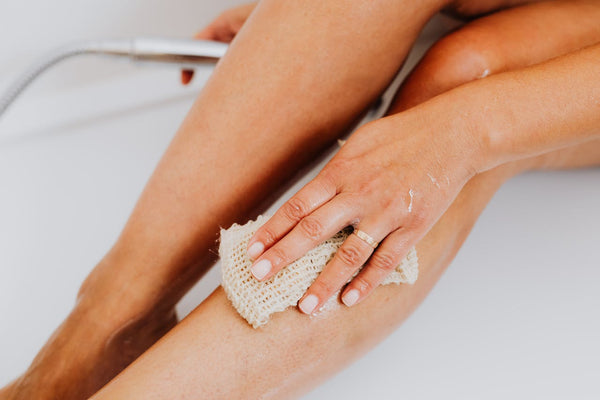
Aim to exfoliate the sugared areas every few days, using a gentle scrub or exfoliating glove. This practice helps to keep the hair follicles clear, allowing new hair to grow out unimpeded.
Moisturize
After sugaring, your skin might feel a bit tender, so it's important to moisturize. Opt for a gentle, natural lotion that doesn't contain any harsh chemicals or fragrances that could irritate your freshly sugared skin.
Moisturizing helps to soothe and hydrate the skin, maintaining its softness and elasticity.
Benefits of Sugaring
Is sugar wax good? Let's explore some of the benefits:
Less Painful Than Waxing
One of the sweetest perks of sugaring is that it's generally less painful than waxing. The natural paste adheres to the hair rather than the skin, leading to a less intense pull during hair removal. This makes the whole experience more comfortable, especially for those with a lower pain threshold.
Natural Ingredients
Sugaring stands out for its use of simple, skin-friendly ingredients. As mentioned, a traditional sugaring paste is made from sugar, lemon, and water.
This makes it a great option for those looking to avoid synthetic chemicals and adhere to a more natural beauty regimen.
Long-Lasting Results
After putting it to the test, we've found that sugaring offers longer-lasting results compared to shaving, and even some forms of waxing. Since the hair is removed from the root, it takes longer for it to grow back, leaving you with smooth skin for weeks on end.

For Every Skin Type
Whether you have resilient or sensitive skin, sugaring is suitable for all skin types. Its gentle nature makes it an excellent choice for those prone to irritation or allergic reactions from other hair removal methods.
Fewer Ingrown Hairs
Thanks to the direction in which the hair is removed (in line with its natural growth), sugaring minimizes the risk of ingrown hairs. This is a game-changer for anyone who's battled with those pesky, often painful ingrown hairs in the past.
Conclusion
From its roots in ancient beauty rituals to its modern-day DIY convenience, sugaring offers a less painful alternative to waxing, with the added benefits of using skin-friendly ingredients and minimizing ingrown hairs.
Whether you're looking to treat delicate facial areas or aiming for full-body smoothness, sugaring caters to all skin types and areas with impressive, long-lasting results. And the best part?
With a Sugar Me Smooth sugaring set, this sweet solution to hair removal is not only affordable but also easily achievable in the comfort of your own home. So why wait? Dive into the world of sugaring with Sugar Me Smooth and experience the joy of silky-smooth skin today!
Sugaring (FAQs)
How Much Does Sugaring Cost?
The cost can vary widely depending on where you go and what areas you're getting done. However, at Sugar Me Smooth, we're all about making this sweet hair removal method accessible and affordable.
Our hair removal jars, which are perfect for those looking to dip their toes into the sugaring world, start at a wallet-friendly price of just $19, depending on your needs. This makes sugaring not just a luxurious treat for your skin, but an affordable one too.
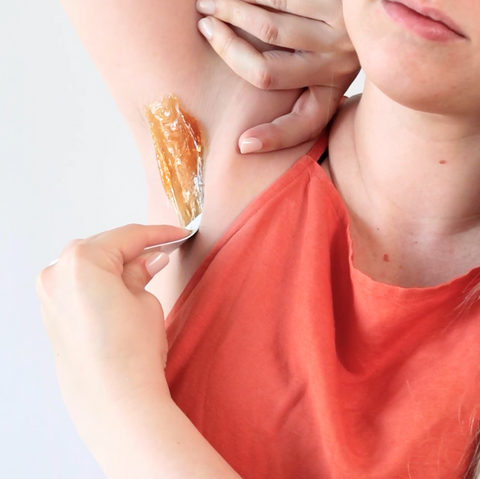
Whether you're looking to smooth out your legs, tidy up your bikini line, or give your face a fresh, hair-free glow, our kits provide everything you need without breaking the bank.
Can Sugaring Be Done At Home Yourself?
You bet! Sugaring is one of those fantastic beauty treatments that you can absolutely do yourself from the comfort of your bathroom.
Our Sugar Me Smooth kits are designed with you in mind, making at-home sugaring seamless. Each kit comes packed with everything you need to get started.
Did our blog meet your needs? You might also find our other guides helpful:



